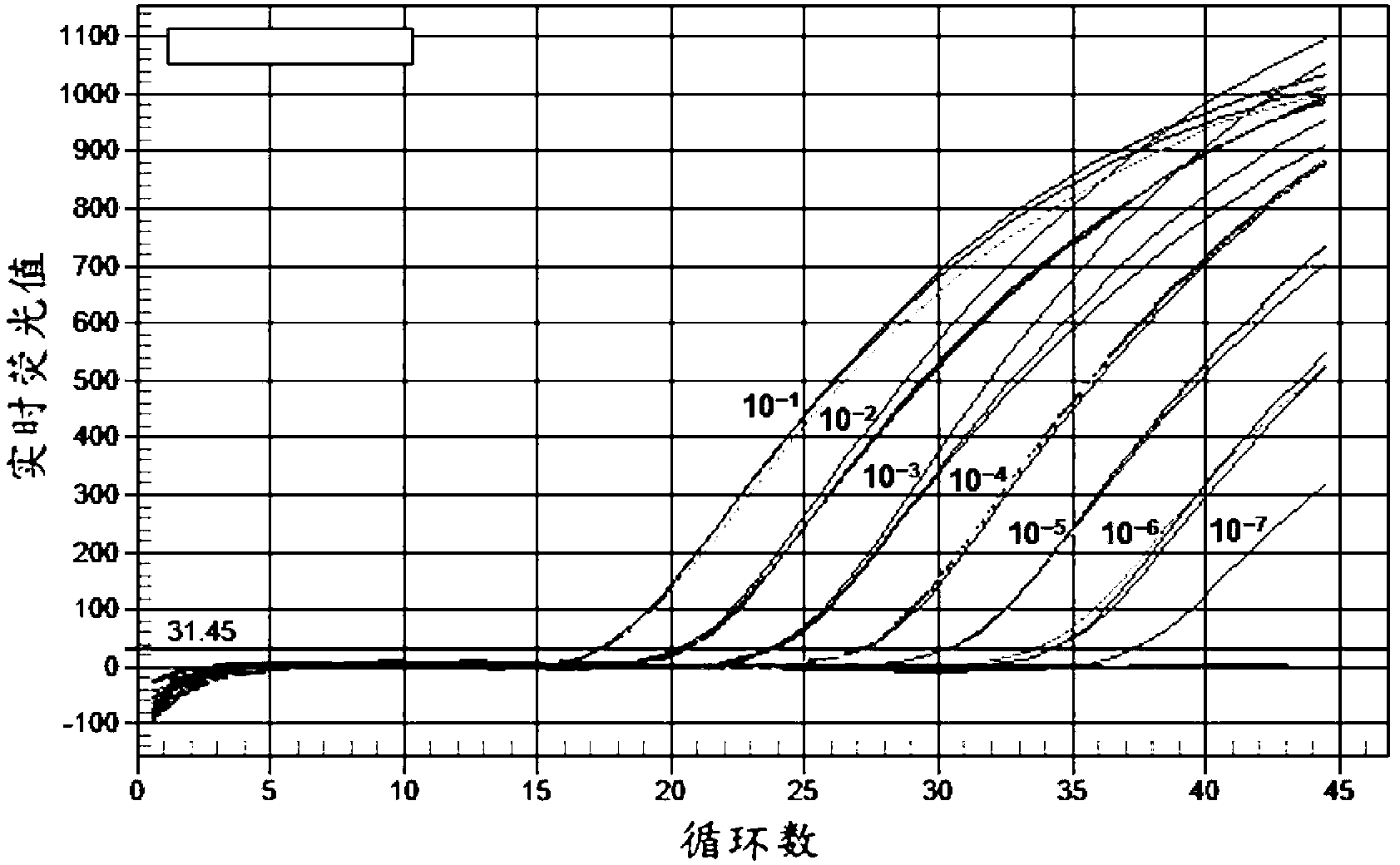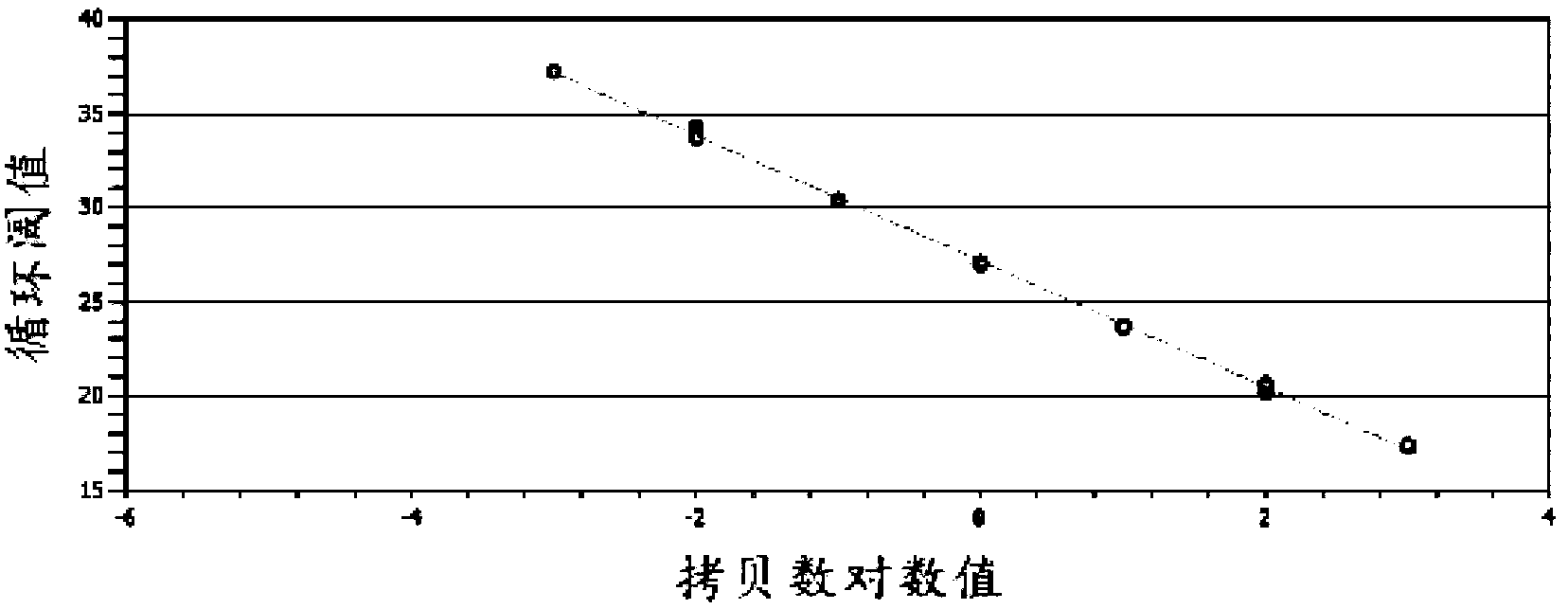Fluorescent quantitative reverse-transcription-polymerase chain reaction (RT-PCR) primer for detecting schmallenberg virus and probe
A fluorescent quantitative and probe technology, applied in the field of fluorescent quantitative RT-PCR detection, can solve the problem of not completely ruling out the occurrence of Schmallenberg virus in humans, avoiding false negative results, saving manpower and material resources, and achieving good specificity. Effect
- Summary
- Abstract
- Description
- Claims
- Application Information
AI Technical Summary
Problems solved by technology
Method used
Image
Examples
Embodiment 1
[0030] Fluorescent quantitative RT-PCR detection of embodiment 1 Schmallenberg virus
[0031] 1 Design of primers and probes: By comparing and analyzing the genome sequences of related viruses of the Bunyaviridae family and Schmallenberg virus published in GenBank, a segment with no secondary structure and a high degree of conservation was selected, and multiple pairs were designed. For primers and probes, the length of the primers is generally about 25 bases, and there is no complementary sequence between and within the primers. The sequence combination of optimal primers and probes (designed according to the S gene) is as follows (SEQ ID No.1-3):
[0032] Upstream primer SBV-S-130F: 5'-GAAGCTAGTGCTCAGATTGTCATGC-3'
[0033] Downstream primer SBV-S-130R: 5'-GTGGATAGAAGTCAAAAGCATCAAGG-3'
[0034] TaqMan Probe SBV-S-130FAM:
[0035] 5'-FAM-AAGGGATGCACCTGGGCCGATGGTTA-BHQ1-3'
[0036] 2 Preparation of Schmallenberg virus RNA: select primer pair SBV-S-130F / R and probe SBV-S-130...
Embodiment 2
[0082] Example 2 Specificity Analysis of Schmallenberg Virus Fluorescent Quantitative RT-PCR Detection
[0083] Sango Texas, Shuni Texas, Aino Texas, Simbu Texas, Peaton Texas, Sathuperi Texas, Akabane Australien A347, Akabane Boeringer Vakzine A, Oropouche Australien O, AINO Z445Australien, Tinaroo A371Australien and Thimiri V981Australien virus RNA samples and 132 SBV-negative cattle and sheep RNA samples, as well as 46 cattle and 46 sheep negative serum RNA samples collected from China, verified Specificity of primers and probes for detection of Schmallenberg virus. The results showed that all the above-mentioned SBV negative RNA samples were amplified by fluorescent quantitative RT-PCR, and no specific amplification curve appeared, only the SBV RNA standard (10 -3 ) showed typical amplification, indicating that the designed primers and probes had good specificity for Schmallenberg virus.
[0084] image 3 It is a fluorescent quantitative RT-qPCR amplification curve for ...
PUM
 Login to View More
Login to View More Abstract
Description
Claims
Application Information
 Login to View More
Login to View More - R&D
- Intellectual Property
- Life Sciences
- Materials
- Tech Scout
- Unparalleled Data Quality
- Higher Quality Content
- 60% Fewer Hallucinations
Browse by: Latest US Patents, China's latest patents, Technical Efficacy Thesaurus, Application Domain, Technology Topic, Popular Technical Reports.
© 2025 PatSnap. All rights reserved.Legal|Privacy policy|Modern Slavery Act Transparency Statement|Sitemap|About US| Contact US: help@patsnap.com



